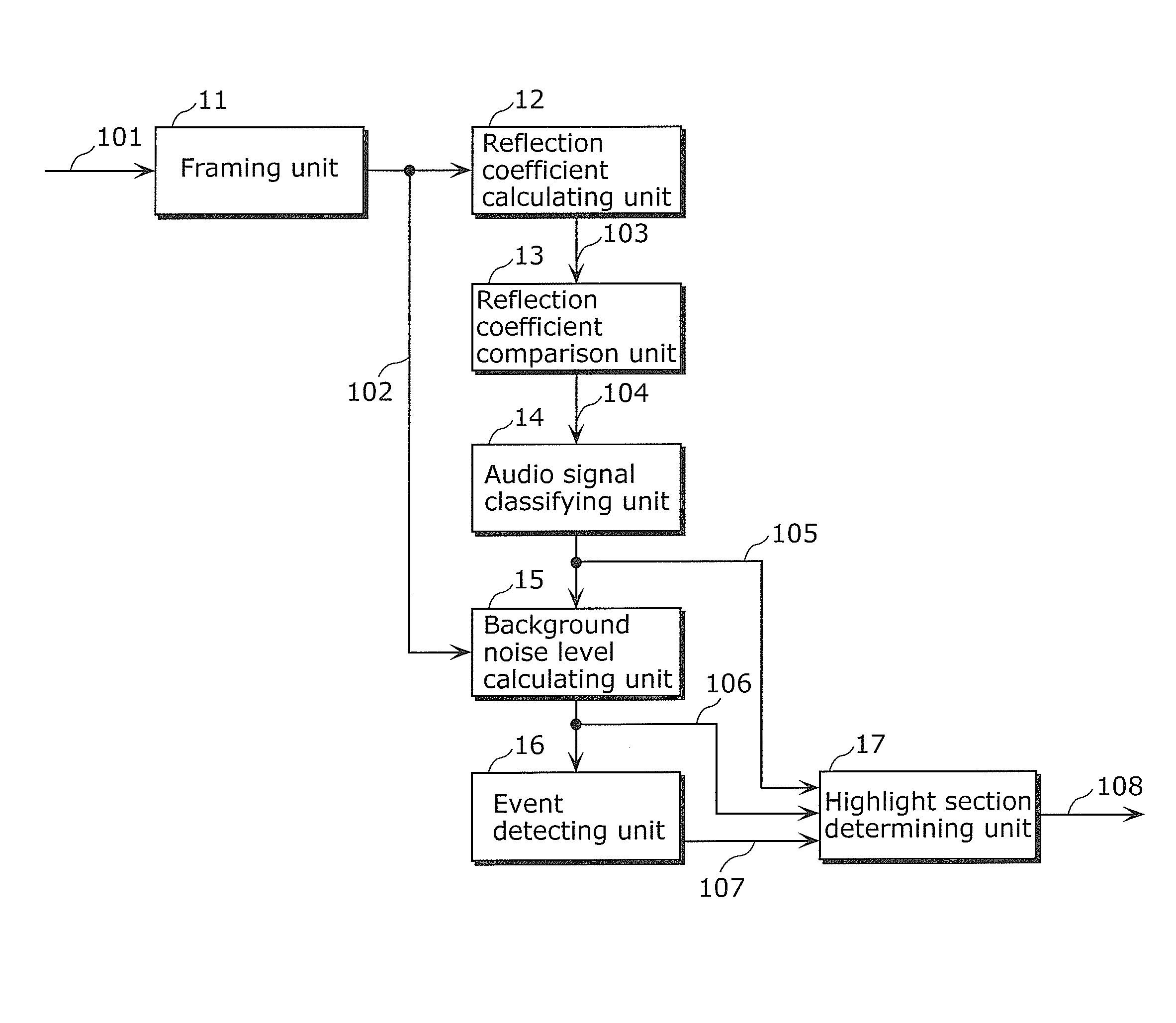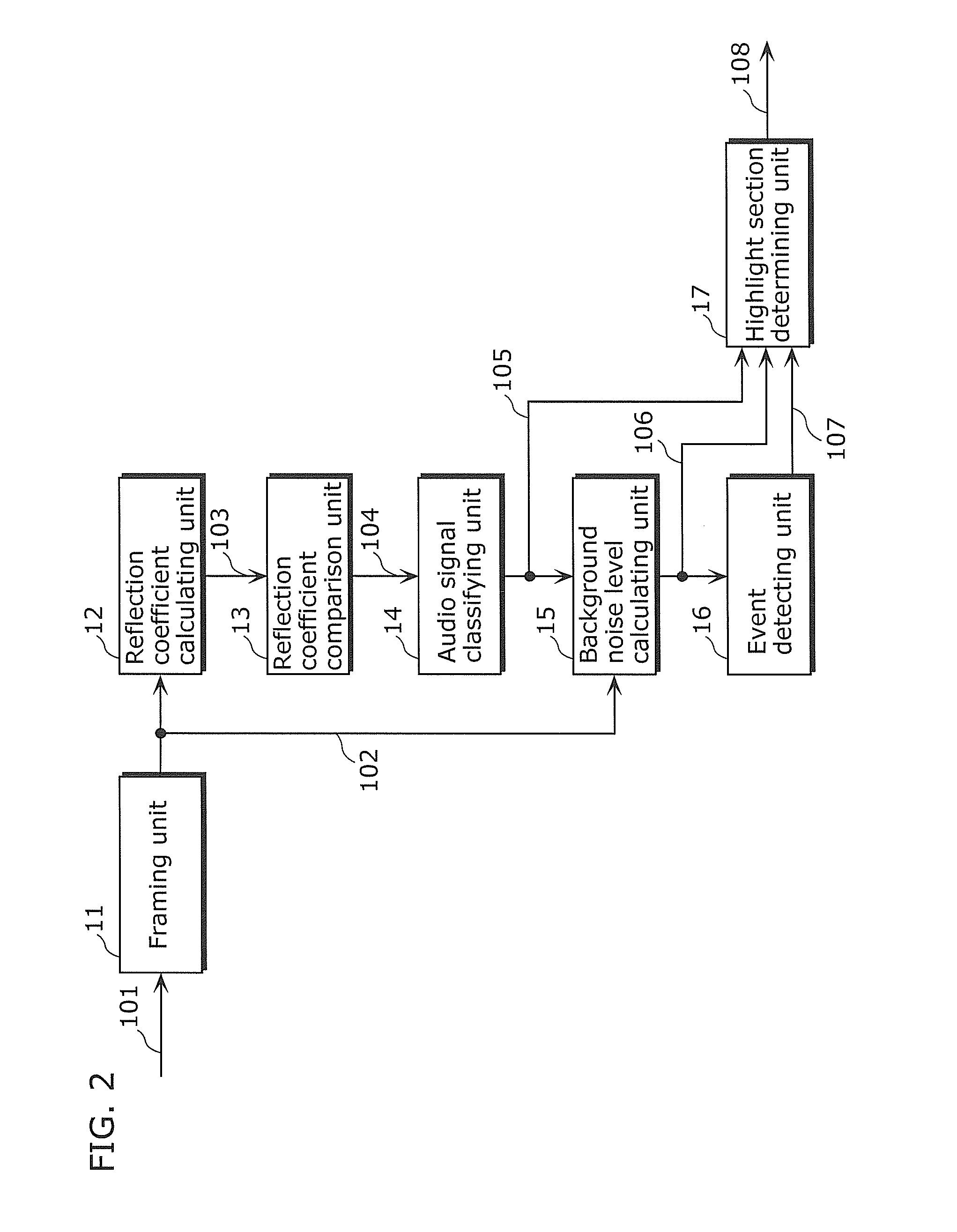Acoustic signal processing device and method
a signal processing and signal technology, applied in the field of acoustic signal processing devices and methods, can solve problems such as difficult to obtain stable determination, and achieve the effect of less processing amoun
- Summary
- Abstract
- Description
- Claims
- Application Information
AI Technical Summary
Benefits of technology
Problems solved by technology
Method used
Image
Examples
embodiment 1
[0023]FIG. 2 illustrates the configuration of the audio signal processing device according to the embodiment 1. In FIG. 2, the arrows between the processing units indicate the flow of the data, and the reference numerals assigned to the arrows indicates the data passed between the processing units. As illustrated in FIG. 2, the audio signal processing device determining the highlight section with small calculating amount based on the characteristics of the temporal change in the component of the input audio signal in the exciting section includes a framing unit 11, a reflection coefficient calculating unit 12, a reflection coefficient comparison unit 13, an audio signal classifying unit 14, a background noise level calculating unit 15, an event detecting unit 16, and a highlight section determining unit 17. The framing unit 11 divides the input audio signal 101 into a frame signal 102 of a predetermined frame length. The reflection coefficient calculating unit 12 calculates a reflec...
PUM
 Login to View More
Login to View More Abstract
Description
Claims
Application Information
 Login to View More
Login to View More - R&D
- Intellectual Property
- Life Sciences
- Materials
- Tech Scout
- Unparalleled Data Quality
- Higher Quality Content
- 60% Fewer Hallucinations
Browse by: Latest US Patents, China's latest patents, Technical Efficacy Thesaurus, Application Domain, Technology Topic, Popular Technical Reports.
© 2025 PatSnap. All rights reserved.Legal|Privacy policy|Modern Slavery Act Transparency Statement|Sitemap|About US| Contact US: help@patsnap.com



